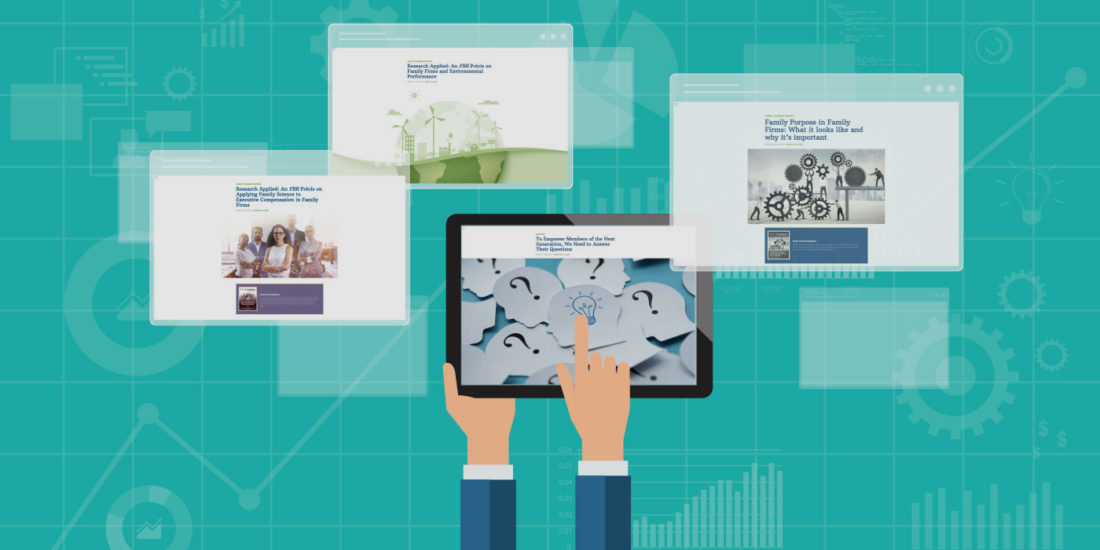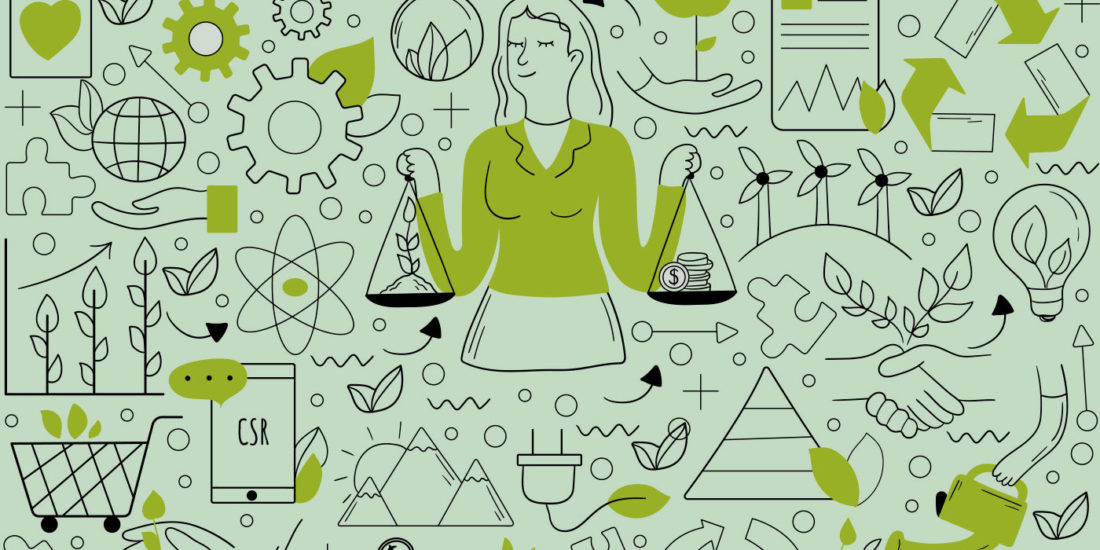How Coaching and Consulting Work Together to Complete the Puzzle of Sustainable Change, an article by Carmen Lence
In her article, “How Coaching and Consulting Work Together to Complete the Puzzle of the Sustainable Change,” Carmen Lence examines the challenge of facing change in a family enterprise and how the coach and the consultant working together can create stability around what is often a fearful moment in the life of the family and the family enterprise
In any family enterprise, the founders or senior members may doubt their decisions or the family may question their intentions. While a consultant can offer advice and experience from within a business context, a coach can come in and deal with the emotions surrounding the change issues.
“Using consulting to complement coaching, and coaching to complement consulting, adds value to family business engagements and provides all the pieces needed to complete the puzzle of sustainable change.“
How Coaching and Consulting Work Together to Complete the Puzzle of Sustainable Change
Carmen Lence, CFBA
As a consultant, have you ever walked out of a successful family business meeting, where everybody agreed on the changes that needed to take place, only to come back a few weeks later and find out that nothing has actually been implemented?
As a family member, have you ever spent a substantial amount of money on consultancy fees, only to fail to implement the changes the consultants proposed, even though you know it would be the right thing for the family business to do?
No Change no Pain
We all know that change is difficult. In fact, change is so difficult that our brain is actually wired in a way that provokes sensations of physiological discomfort as soon as we face the slightest threat of change. As such, many of us do whatever it takes to avoid it. Even in the face of life-threatening situations, many of us have a hard time making decisions that involve change. Let me give you an example. In a study of more than 9,000 cancer survivors that was published in 2008 in the Journal of Clinical Oncology, researchers found that fewer that 20% had made significant lifestyle changes, despite the fact that they had faced serious health issues.
Neuroscience (the study of the anatomy and physiology of the brain) has, in conjunction with magnetic resonance imaging, provided insights into why change is so difficult. When we want to make a conscious change, we use an area of the brain called the prefrontal cortex, which is where our working memory (where temporary storage and manipulation of information is located) is placed. This area of the brain uses up a lot of energy and its use quickly generates a sense of discomfort, or even anger, because is linked to the amygdale, which controls our fight-or-flight response.
In order to avoid this discomfort and stress, our brains favor the use of the basal ganglia, which is the part of the brain that controls habit-based behavior. Have you ever locked your front door when you left the house and then completely forgotten that you have done so? Or driven home from work without actually remembering the journey? Such events are the result of your use of the basal ganglia, which can complete any familiar activity without conscious thought, all the while using much less energy than the prefrontal cortex.
So, given the fact that our brains favor the basal ganglia over the prefrontal cortex, it is no big surprise that many family business members resist change and fail to implement proposed plans made by the consultants that they themselves hired. For example, one family business may have been advised to start to implement a succession plan, with the head of the family being encouraged to start delegating more responsibilities to the future successor. However that same family head is so familiar with his roles and responsibilities that he predominantly uses the basal ganglia in carrying out his everyday duties. For him, this feels comfortable; it is business as usual. On the contrary, delegating his responsibilities to someone else would involve the prefrontal cortex, which means making a conscious effort to change behavior in a manner that potentially causes discomfort.
On top of this, many people seriously resist being told what to do because this fires the prefrontal cortex’s connection to the amygdale. This provokes a defensive reaction and an inclination to find as many reasons as possible not to obey the instruction. This is especially true when the emotional aspects of new plans for change have not been explicitly addressed. For example, the fact that the founder of the company has a hard time delegating his responsibilities may be a signal that he is experiencing emotional difficulties with the underlying motivations behind the action plan; perhaps he is scared, or feels like he will lose his identity if he is no longer running the company. Such emotions need to be addressed if the action plans are to have any chance of success.
Finally, because the brain is programmed by experiences that are unique to each individual, everybody thinks in a different way. As a result of this, solutions provided by others are not as meaningful to us as the solutions that we reached by ourselves, using our own experiences and opinions.
Coaching your way through change
Coaching involves helping clients to think about possibilities, encourages them to arrive at their own answers and solutions, energizes them and motivates them to take action. Coaching is an ideal tool for bypassing the prefrontal cortex’s defenses and driving people to implement changes.
Research has shown that when we find our own answers to problems, our brains undergo high levels of activity as they build new connections. Studies into neuroplasticity (the ability of the brain to change structurally and functionally) show that if we focus our attention on positive things that is where we are going to be making and reinforcing connections. As an example, a study of brain patterns in Buddhist monks revealed that the part of their brain associated with happiness (left prefrontal cortex) was highly developed. This indicates that they do possess the capacity to educate themselves to be happy.
The coaching process reinforces the motivation to implement changes by making the client design their own solutions and actively plan the steps that need to be taken. This entails that they devise their own action plan and retain accountability for its implementation. David Rock and Jeffery Schwazrt in their article “The Neuroscience of Leadership,” point out that those reinforcing moments of insight can make changes in the brain that can lead to new behaviors.
Coaching is a process that releases people’s potential and both accelerates change and keeps it sustainable, long after the coaching engagement is complete.
Coaching or consulting, coaching and consulting… What is the best option to obtain sustainable change?
The main differences between a coach and a consultant are as follows:
1- Consultants provide expert solutions, while coaches provide skills to help individuals or teams to find their own solutions.
2- Consultants are not always willing or prepared to deal with the emotional impact that change may have on their clients; coaches are comfortable dealing with the emotional side of change.
3- Consultants are generally focused on change at the organization level, coaches are generally focused on change at the individual level (with the exception of team coaching).
Successfully implanting change in a family business is like solving a puzzle that can only be completed using pieces from the coaching field and the consulting field. Using the previous example of the founder dealing with succession planning, he may decide, after a coaching session, that the company needs a board of directors to bring objectivity and accountability. The consultant can add that the board should include external advisors from a given field and offer advice, based on his expertise and knowledge of family business best practices, on how it should be run. In the next coaching session the founder may work with his coach to address his resistance to introducing an external advisor (he does not like the idea of other people telling him what to do) and they can work together to explore the emotions that lie behind this resistance: What are his fears? What does he have to lose? What does he have to gain? As a result of this meeting the founder may choose to identify a different solution or may decide to proceed with hiring an external advisor. In any case, the process keeps moving and there is a higher chance that the changes will be implemented and will be successful because the family arrived at their own solutions and any resistance to the changes were addressed.
Using consulting to complement coaching, and coaching to complement consulting, adds value to family business engagements and provides all the pieces needed to complete the puzzle of sustainable change.
About the Contributor
 Carmen Lence, NextGen Consulting and Coaching, is a family business expert with an MBA, international business experience, and professional coach qualifications. She specializes in working with next generation members of family companies in leadership development, conflict management, and career development. Carmen holds the FFI Certificate in Family Business Advising.
Carmen Lence, NextGen Consulting and Coaching, is a family business expert with an MBA, international business experience, and professional coach qualifications. She specializes in working with next generation members of family companies in leadership development, conflict management, and career development. Carmen holds the FFI Certificate in Family Business Advising.
Stay tune next week for another issue of The Practitioner.
Yours in Practice,
The Practitioner





